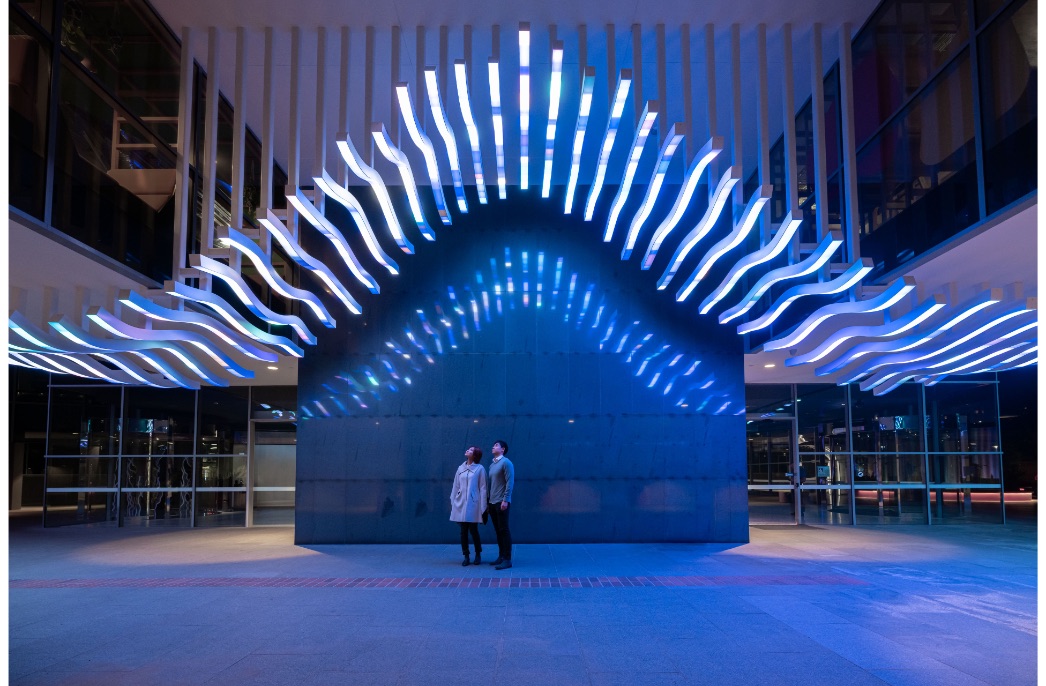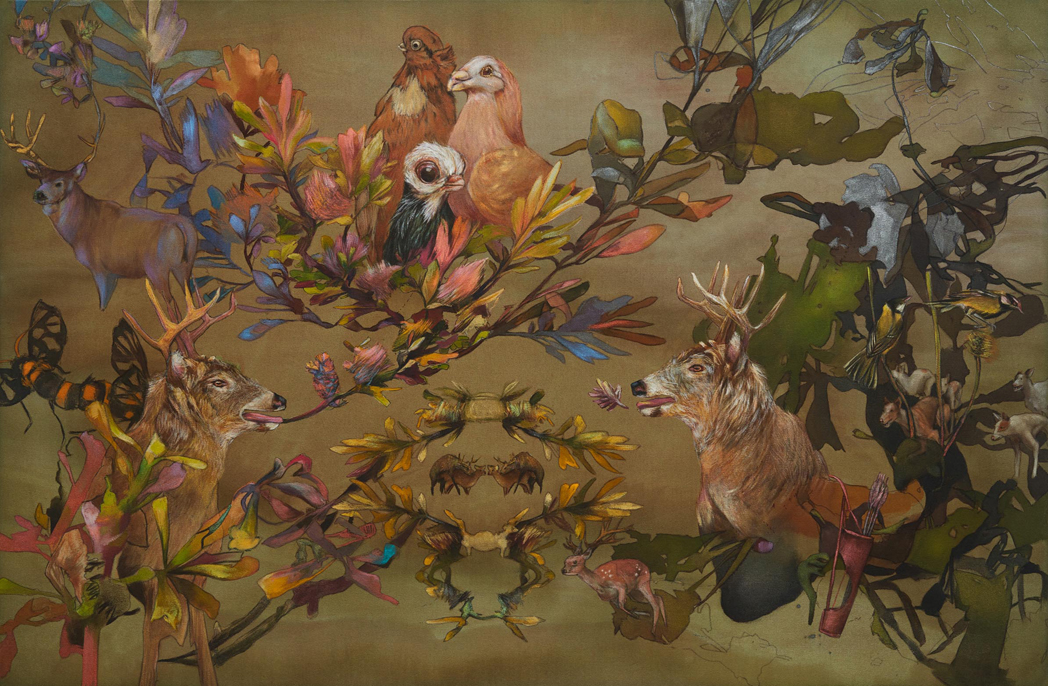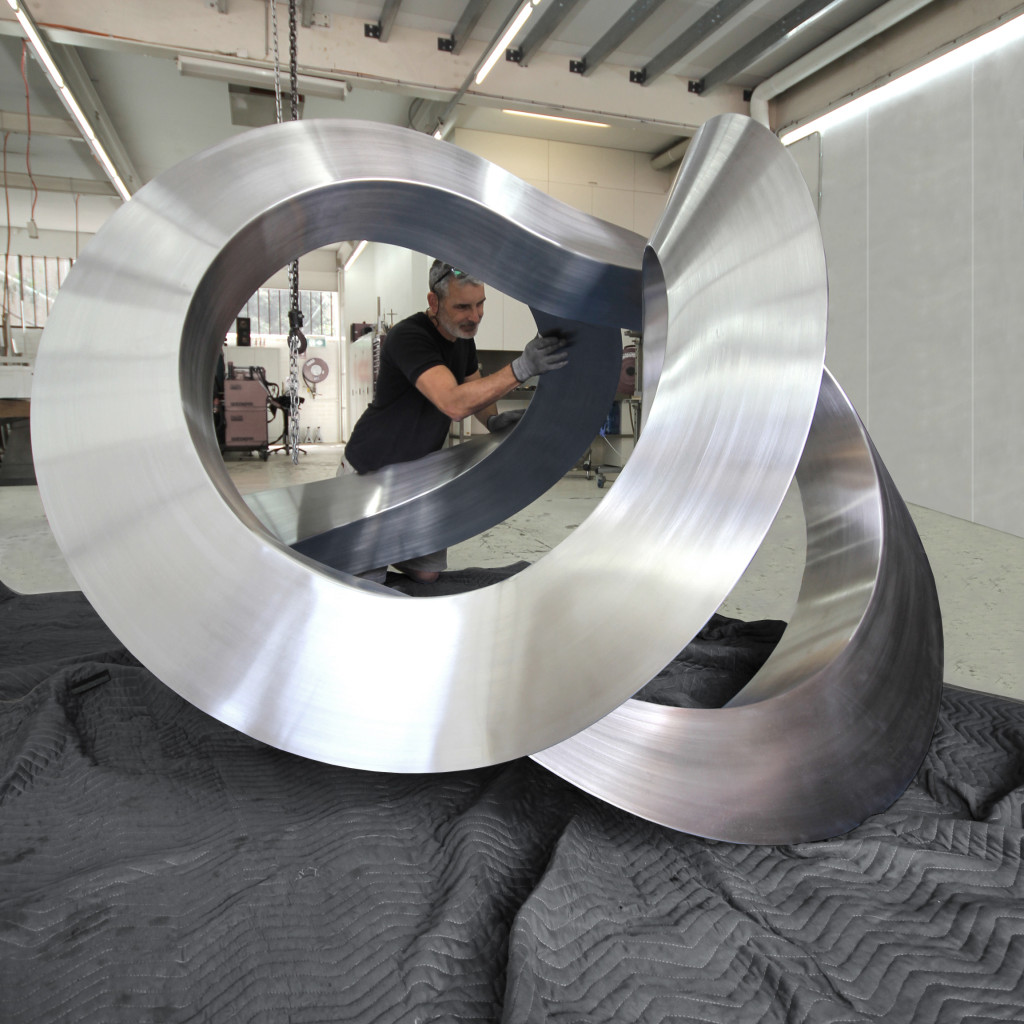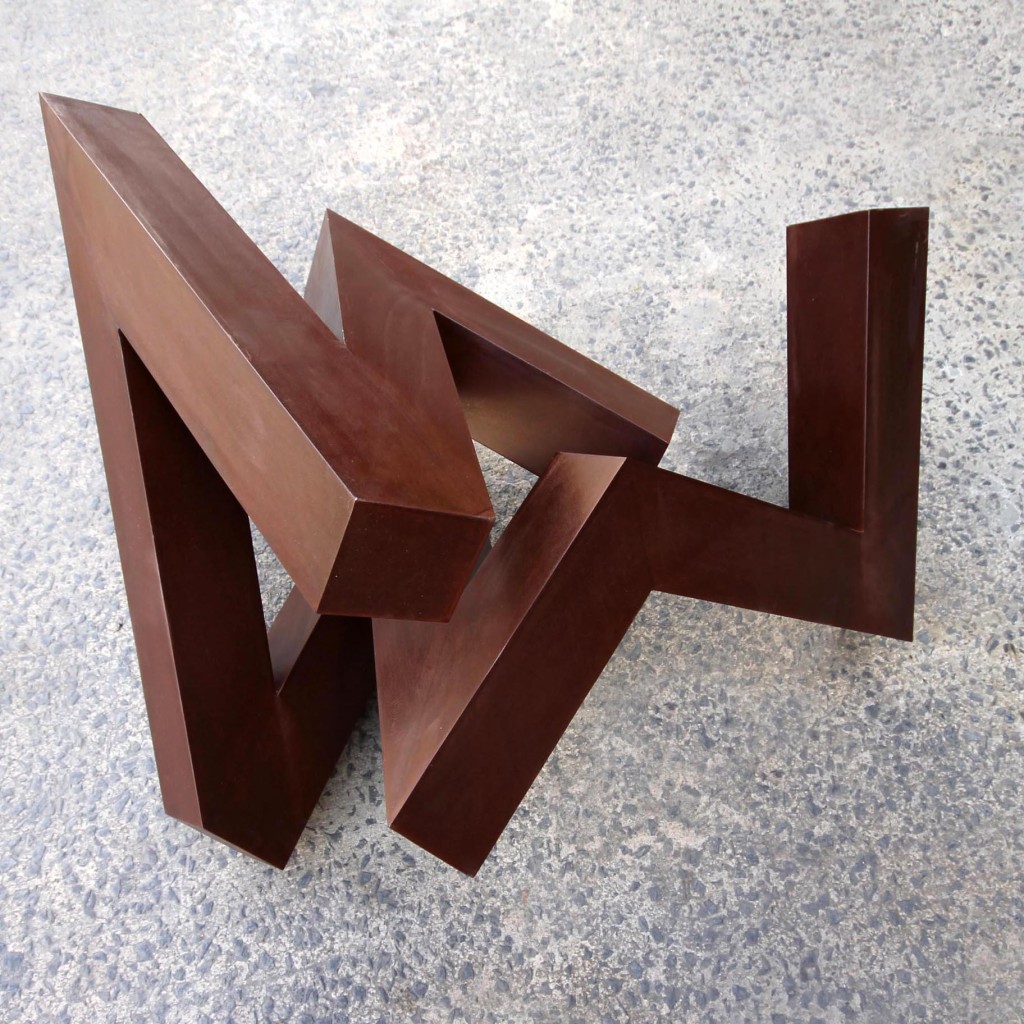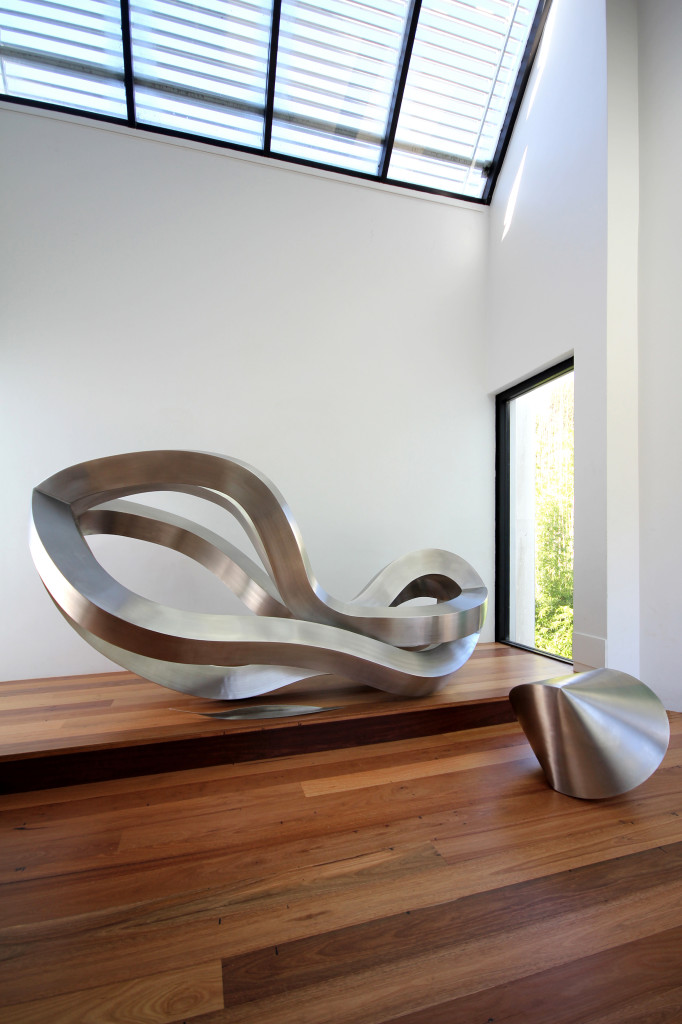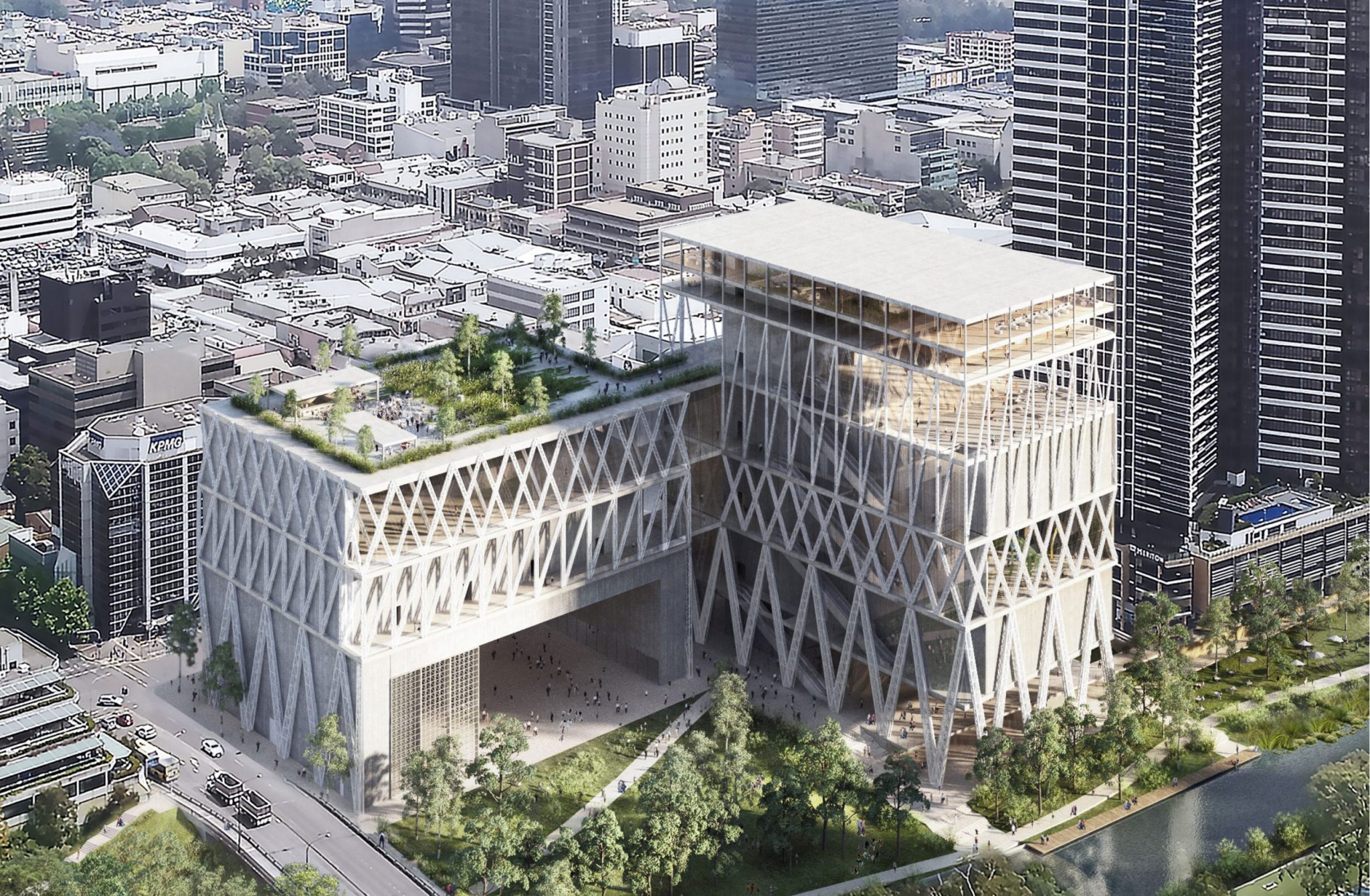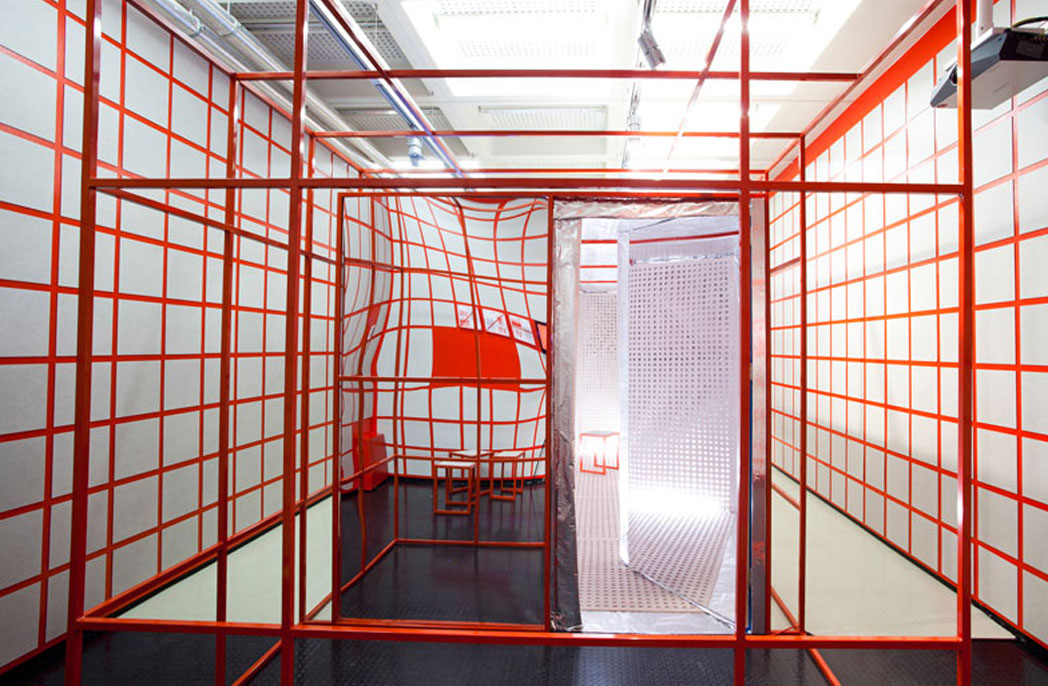
Moving metal with Korban/Flaubert
Share
Above: Janos Korban and Stefanie Flaubert, image courtesy Korban/Flaubert, interview by Sara Kirby.
Korban/Flaubert is a Sydney-based duo – metal specialist Janos Korban and architect Stefanie Flaubert – a creative pair with a fascination for producing objects from natural materials. Since 1993, Korban and Flaubert have worked together, creating a range of eclectic furniture, lighting, and sculpture, with many pieces exhibited both locally and overseas. With metal at their forefront, many of Korban/Flaubert’s work centres around a motif of graceful, natural movement and flowing forms. ADR speaks with the design duo about their inspiration, design process, and the nuances of working with metal.
Can you give a little insight into the biggest challenges of your work?
Working with metal is not easy, even after 20 years. With each piece we try to explore new ground on some level. Forms that express something new for us. We produce a lot of models to test an idea and then Janos lays into the material. It’s challenging to develop models which are unforced and expressive, but still animal. And its challenging for Janos to take them further and bring them to life in metal.
Where do you turn for inspiration, and which artists or designers have had the biggest influence on your work?
Eduardo Chillida has always been a source of inspiration for us. Especially his physical approach to the material. Primal, fundamental, expressive. But inspiration is everywhere. Rocks. Planes. Freeways. Iran. Africa. Aboriginal art. Trees. Bones. Tools. Tim Hawkinson.
What excites or frustrates you about the current state of Australian art/sculpture and design?
Its all pretty good here isn’t it? There seems to be a lot of good work going on out there in art, design, architecture. We should be content that so much good work is out there. Does it ‘excite’ or ‘frustrate’…? We reflect our conditions. People made greater art under the Soviets, for example. We don’t have a lot of political restrictions here. We are very fortunate. No complaints. But perhaps the lack of resistance makes our work relatively tame. Speaking for our own work, which is more about the internal world than the external.
What is your favourite project from your own body of work and why?
Isn’t it always whatever you are working on now? You are in it, and it is everything. Last year we liked working on Refuge and Iron in the Soul.
What is your favourite piece of art/sculpture?
Probably something geological, like Zumaia beach, in Basque Spain – 100 million years old. You can’t beat the earth.
You work with a lot of metal – what draws you to that material?
Metal comes from dirt, from the earth. We think about metal as a treasure from the earth. We work to make something valuable out of it, but to also explore the ‘metalness’ of metal, the ductility and lustre of stainless steel. Exploring movement and energy, for example, in slow lines tracing out the sense of a volume in space, or the mass of metal, the physical presence of metal, in something as simple as a chunk of metal taking the form of a table. However, we also produce objects which have a sense of the ancient and inscrutable, and metal can convey this too. The sense of something that has been abandoned and rediscovered.
Your website includes an emphasis on recycling your works once they have lived their lives. Do you purposefully make your works from recyclable materials, and do you engage in any other environmental considerations throughout the creative process?
Metal is inherently valuable. We use this limited resource to make valuable and durable pieces with great longevity. We use stainless steel and corten steel, both of which are 100% recyclable and upon arrival in our workshop, the raw materials already contain very high percentages of material which has been recycled. That’s just the way metal is.
What are you working on at the moment?
A chunky piece of public art for a site in Sydney’s east called Germinal. It’s a broken form, truncated, blown about. A container of memories…
You Might also Like
